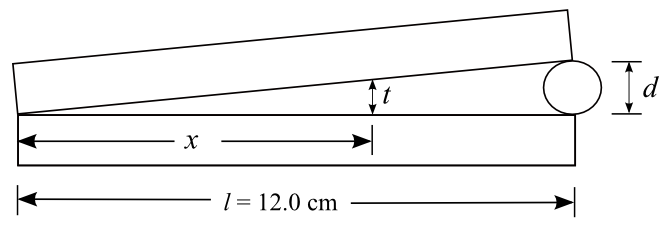Thin-Film Interference
Introduction
Interference occurs when the light of wavelength, λ, from two coherent sources arrives at the same point. Letr1
be the length of the path taken by the light from one source to the observation point and let r2
be the length of the path taken by the light from the other source to the observation point, so that |r2 − r1|
is the path difference.
If the path difference is an integer number of wavelengths, the path difference produces a zero phase difference at the observation point:
If the path difference corresponds to a half-integer number of wavelengths, the path difference produces a 180° (half-cycle) phase difference at the observation point:
A phase difference of zero means that the two waves interfere constructively, producing a resultant wave of larger amplitude. For a phase difference of 180° the two waves interfere destructively, producing a resultant wave of small amplitude. For electromagnetic waves, the amplitude of the wave determines the intensity of the light, so in an interference pattern, constructive interference corresponds to a bright region and destructive interference corresponds to a dark region.
One application of interference is reflection from a thin film, where the interference is between light reflected at the top and at the bottom of the film, as shown in Figure 1. For light incident perpendicular to the film (normal incidence), the path difference for the two rays 1 and 2 is 2t, where t is the thickness of the film.

Figure 1
λn
, of the light in the film where λn = λair/n,
λair
is the wavelength of the light in air, and n is the refractive index of the film material.
But there can also be a 180° phase change, or not, in the reflection process. Let light traveling in a material of refractive index n1 reflect from the surface of a material of refractive index n2. If n1 > n2
, there is no phase change due to the reflection whereas if n1 < n2
the reflection produces a 180° phase change.
The phase change due to reflection must be combined with the phase change due to the path difference to derive the condition for destructive interference and for constructive interference. The result is the following.
If neither ray has a phase change due to reflection or if both have a phase change then
If only one of the rays has a phase change due to reflection then
| 2t | = | mλn, m = 0, 1, 2, ... gives constructive interference | ||
| 2t | = | (m +
|
| 2t | = | mλn, m = 0, 1, 2, ... gives destructive interference | ||
| 2t | = | (m +
|
Objective
In this lab we will analyze thin-film interference data from an experiment done with a thin air wedge between two glass plates. You will use this data to determine the thickness of a human hair.Apparatus
- Paper
- Calculator
- Pencil
Procedure
Please print the worksheet for this lab. You will need this sheet to record your data.Data
You will be given representative data from the following experiment and will be asked to analyze it. Two very flat glass plates, each 12.0 cm long are one on the top of the other. A human hair with diameter, d, is placed between the plates so that a thin wedge of air of varying thickness is created between the two plates, as shown in Figure 2. At a distance, x, from the end of the plates where they are in contact the thickness of the air wedge is t.
Figure 2
Note:
You will be given a value for Δx in the WebAssign question.
You will be given a value for Δx in the WebAssign question.
Analysis
1
Consider a ray of light reflecting at the top of the air wedge and a ray reflecting at the bottom of the wedge. For light at normal incidence the path difference for these two rays is 2t. Taking into consideration the phase changes that take place upon reflection, which of the following is the condition for destructive interference of the reflected light?
-
•2t = mλair, m = 0, 1, 2, ...
-
•2t =
m +
1 2
λair, m = 0, 1, 2, ...
2
Considering similar triangles in Figure 2 leads to the equation | t |
| x |
| d |
| l |
λair
and t for the mth and (m + 1)th dark fringe.
3
Combine these equations with | t |
| x |
| d |
| l |
λair
, l and d.
4
Use these equations to solve for Δx, the separation between adjacent dark fringes.
5
Use the measured value of Δx that you have been given to solve for the thickness, d, of the hair and record your result.

